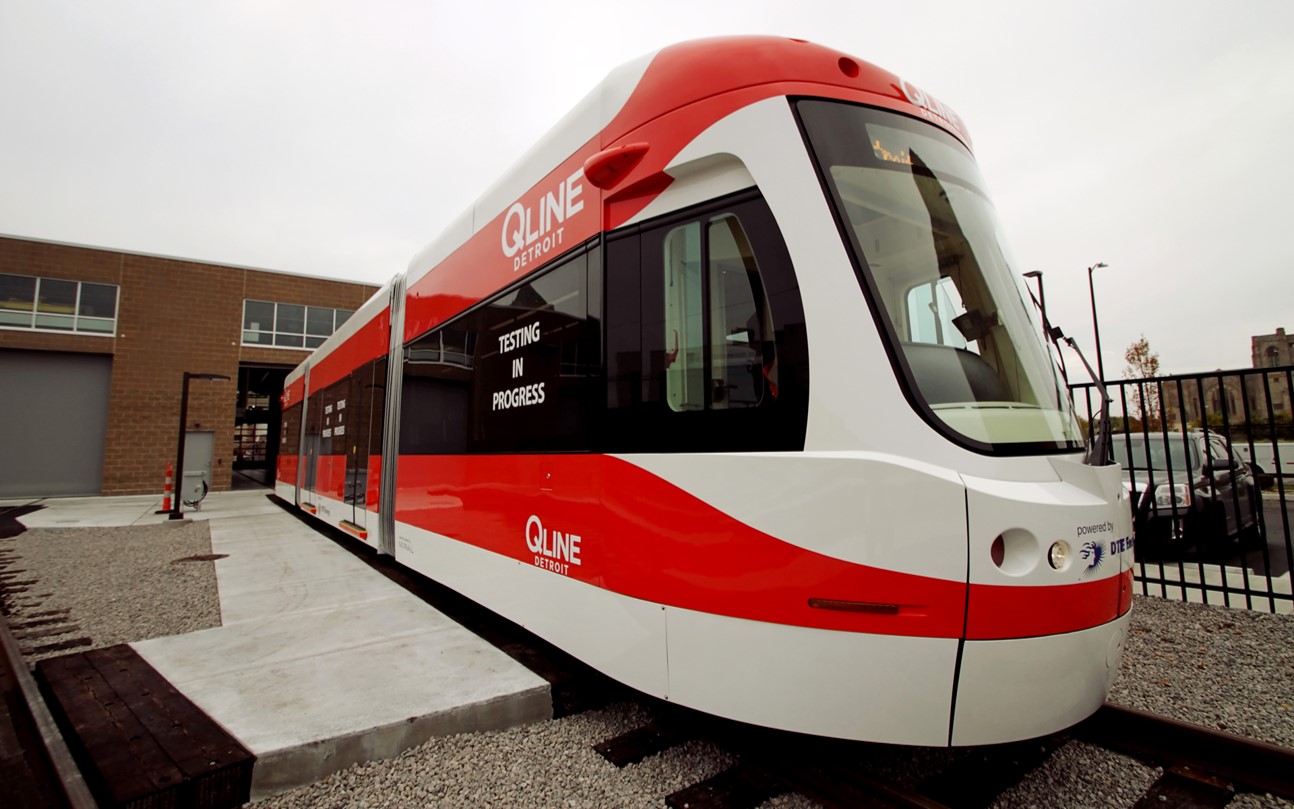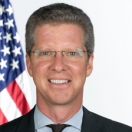
When President Obama took office, Detroit was grappling with significant, long-simmering problems – its famous auto industry was in crisis and had largely relocated away from the city, its population had been in decline for half a century, vital city services were not being delivered, and the city government was hurtling towards bankruptcy.
As Detroit’s financial situation worsened— leading the city to file the largest municipal bankruptcy on record— an “all hands on deck” spirit took hold locally and nationally.
Under the spotlight, Detroiters’ grit and determination shone through, giving rise to a favorite local slogan: “Detroit Hustles Harder.” Institutions at all levels aligned their resources and efforts to help Detroit get back on its feet.
One of those institutions was the Federal Government, which began a close partnership with the City of Detroit in 2011 that continues to this day.
The close working partnership between Detroit and the Federal Government began in 2011 when President Obama deployed top federal talent to partner with local communities through the Strong Cities, Strong Communities program. Detroit was selected from a competitive applicant pool to be one of the first communities to participate in the program. Federal staff were embedded in Detroit City Hall to work with community stakeholders, business, and philanthropy to deliver tailored assistance and identify resources that could help Detroit’s recovery. As Detroit’s financial situation worsened, the Obama administration stepped up its engagement; appointing a special federal coordinator and creating a “Detroit Federal Working Group” with representatives from numerous Federal agencies to help build capacity in Detroit and provide tailored assistance.
We can learn a lot from Detroit’s experience: A new report released today describes how the Detroit federal-local partnership has grown and evolved to meet the city’s changing needs delivering impressive outcomes along the way.
“Starting five years ago, I sent some of my top people across the federal government to help City Hall and ordinary citizens to spark that comeback here in the Motor City. So today you’ve got buses that are running again, streets that are well-lit again, new homes and businesses getting off the ground again. There’s still plenty of work to do, but you can feel the difference. You can feel something special happening in Detroit.”President Obama, January 2016
The stories and lessons learned through this partnership, shared in the report released today, point toward a new approach to federal-local collaboration that this Administration has pioneered. Agencies are asking what matters most to local leaders, and coordinating resources to make it easier for communities like Detroit to get the support they need.
“Every time we’ve brought a City priority to the federal government—from revitalizing neighborhoods to improving bus service—we’ve found a willing and helpful partner.”Detroit Mayor Mike Duggan, December, 2016
At its core, this approach to federal-local teamwork relies on a few basic ideas:
First, the local community—and not the Federal Government—sets the priorities.
Federal team members wake up every day thinking about the top requests for assistance that the Mayor of Detroit and its citizens have put forth, from neighborhood stabilization to workforce development and training to policing and public safety.
Second, federal partners help local communities move beyond crisis response by building their capacity to pursue longer-term strategies.
The federal team in Detroit has helped the city improve its faltering transportation system by finding resources and expertise for improved bus service and the new streetcar line. The federal team also provided advice as the city developed strategies for workforce training, international engagement and revitalizing its manufacturing sector – among other long-term strategies and investments.

And finally, the Federal Government coordinates across agencies to provide a more seamless process for communities. Often this is with technical advice and knowledge gleaned from the Federal Government’s view across communities.
For example, when the Department of Treasury announced it would provide funds for demolitions of blighted and vacant homes, the Environmental Protection Agency stepped up to provide advice on safe, environmentally-friendly demolition methods for Detroit – now emerging as a national model for communities across the country tackling vacant and abandoned properties.
It’s not easy for leaders facing problems as complex as those in Detroit to take a long-view, while trying to put out fires and tackle urgent challenges. Detroit’s federal-local partnership has offered extra bandwidth, convening partners across sectors and making connections to cutting edge technology and practices from across the country.
The federal team often connected Detroit leaders to people and resources that could assist in the city’s recovery; for example, Detroit’s economic development team with the nation’s leading financial institutions—and international business opportunities, local agencies with federal experts, and elected city leaders with senior Administration officials. The team attended community meetings, church gatherings, events at local schools and businesses to explain the Federal Government’s work and to better understand Detroit’s needs.
Although a lot of the Detroit’s partnership’s work took place outside of the limelight, the results are nothing short of remarkable. What the Federal Government and local leaders in Detroit have accomplished together is best understood through stories from the community, many of which are highlighted in the report released today. Here’s a snapshot:
-
Helping Improve the Bus System: By 2014, Detroit’s bus system was in poor shape. On an average day, just 70 percent of the buses scheduled to be on the road would be functional. The average age of the bus fleet was 12 years, and the buses had not been well-maintained. Preventative maintenance simply did not occur almost one-third of the time. A $25 million competitively-awarded DOT grant enabled Detroit to purchase 80 new buses and meet its schedule for the first time in decades. There are now 192 buses on the road daily, the most in 20+ years. The City implemented 24-hour service for key routes. Ridership is up by over 1 million trips per year.
- Helping Detroit Replace Failing Street Light Infrastructure with City High-Efficiency Lighting: When the President took office, half of Detroit’s 88,000 street lights did not work. With Department of Energy technical assistance, the City installed nearly 65,000 LED street lights, saving 46 million kW of energy and nearly $3 million annually. Anticipated emissions reductions equal the annual emissions from 10,993 passenger vehicles.
“The idea that we’re not going to do everything in our power to bring back, not just a great city, but an iconic city was unthinkable. Detroit is like its people -- it’s resilient.”Vice President Joe Biden
-
Blight Removal: Detroit has used over $260 million from the Department of Treasury’s Hardest Hit Fund (HHF) to remove blighted homes. The City of Detroit has taken down over 10,000 blighted structures in under two years, over 6,000 of which have been funded by Treasury’s HHF. The Detroit Federal Working Group convened 80 stakeholders in a green demolition workshop in anticipation of the coming wave of blight elimination activity, which led the city to update the demolition contracts with smarter, public health practices.

Federal agencies partnered with the city to make significant progress toward blight elimination, helping the city take down over 10,000 blighted structures in under two years, supported be training on green demolition practices through the Environmental Protection Agency. -
City Breaks Ground on Urban Solar Facility in Decommissioned Park: The Department of Energy provided technical assistance to help the City and local electric utility, DTE Energy, convert the decommissioned O’Shea Park into a pioneering 10-acre solar array. The solar facility will open in early summer 2017 and will generate electricity valued at $125K annually.
- New Resources to Jump-start the Housing Market: From 2014-2016, the Department of Housing and Urban Development (HUD) guaranteed construction or rehabilitation of 1400+ unites citywide. The City and nonprofits launched the Zero Percent Home Rehab to provide interest-free loans for home repair, with contributions from HUD. Most recently, the DFWG brought banks, foundations and the state together to develop the Detroit Home Mortgage that provides loans above low appraised values.
Today’s newly released report about the federal-local partnership in Detroit describes the new approach to federal engagement at the local level. The examples of progress made and detailed strategies used to align federal support with Detroit’s recovery efforts pave the way for better collaboration between the Federal Government and communities across the country.



